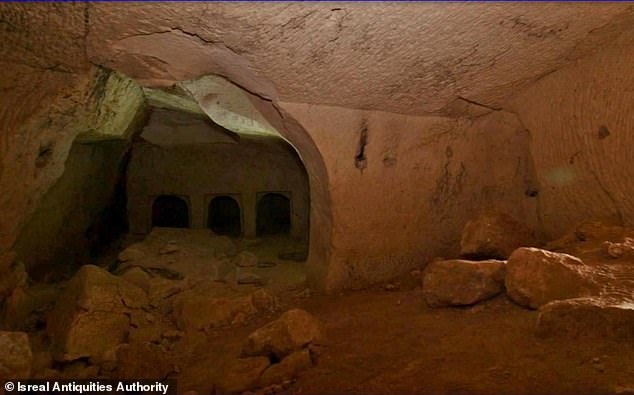
Scientists Unearth Surprising Find in Ancient Burial Cave of ‘Jesus’ Midwife’
The Cave of Salome: A Royal Tomb or Biblical Midwife’s Resting Place?
[Image: The Cave of Salome, southwest of Jerusalem, with its ancient rock-hewn chambers.]
For centuries, the Cave of Salome has been venerated by Christians as the burial site of Salome, the midwife who assisted in Jesus’ birth according to the apocryphal Book of James. Located 30 miles southwest of Jerusalem, the 2,000-year-old cave features intricate burial niches, ossuaries (stone bone boxes), and Greek inscriptions bearing the name “Salome.” Pilgrims historically lit oil lamps here, akin to modern candle-lighting rituals. However, a recent study by the Israel Antiquities Authority (IAA) challenges this tradition, proposing the cave may instead honor a royal figure from the Second Temple period.
A Site of Grandeur and Mystery
The cave’s scale and opulence—including a large courtyard, ornate carvings, and a labyrinth of chambers—suggest it belonged to a high-status individual. Archaeologists argue its design aligns more with elite tombs than a midwife’s grave. “This is one of the most elaborate burial complexes of its time,” says the IAA team, citing similarities to sites linked to Herod the Great’s family.
[Image: 12th-century fresco from Cappadocia depicting Salome (right) bathing the infant Jesus alongside another midwife.]
Competing Claims: Who Was Salome?
The name “Salome” appears in two Greek inscriptions, long interpreted as referencing the biblical midwife. According to tradition, Salome doubted Mary’s virginity, leading her hand to wither until she touched Jesus’ cradle. Yet, researchers propose alternative identities:
- Princess Salome I: Sister of Herod the Great, known for her political machinations.
- Salome II: Herod’s granddaughter, who allegedly demanded John the Baptist’s execution.
- A disciple of Jesus: Possibly Mary’s sister, mentioned in the Gospels.
The name “Salome” (Hebrew: Shlomit) was common in the era, complicating definitive identification. The IAA emphasizes the tomb’s grandeur fits Herod’s family, who built landmarks like Masada and Herodium.
From Jewish Tomb to Christian Shrine
Originally a Jewish burial site, the cave later became a Christian pilgrimage destination. Excavations revealed hundreds of clay lamps in the courtyard, likely used by devotees honoring Salome. A row of ancient shop stalls nearby suggests a bustling hub for selling or renting ritual items.
[Image: Inscriptions and clay lamps found in the cave’s forecourt.]
Scholars Debate the Evidence
While the IAA leans toward a royal connection, others remain skeptical. Boaz Zissu, an archaeologist at Bar-Ilan University, calls the theory “interesting but not conclusive,” urging more evidence. The cave’s link to Herod’s lineage hinges on its architectural splendor, yet no direct inscriptions tie it to his family.
Why It Matters
The debate reflects broader tensions between faith traditions and archaeological reinterpretations. For Christians, the cave symbolizes devotion to a pivotal biblical figure. For historians, it offers clues about Judea’s elite during Herod’s rule—a period marked by both monumental construction and brutal tyranny.
[Image: Illustration of King Herod, whose reign combined grand projects with ruthless executions.]
Herod’s Legacy: Known for the Massacre of the Innocents and architectural marvels like Jerusalem’s Temple Mount, Herod’s family had the resources for such a tomb. His sister Salome I, though ruthless, wielded significant influence, making her a plausible candidate.
Conclusion
The Cave of Salome’s true origins remain shrouded in mystery. Whether it holds a royal princess, a skeptical midwife, or another Salome entirely, its cultural and historical significance endures. Further research may yet uncover secrets buried for millennia, bridging faith and history in this ancient land.
[Image: Wide view of the cave’s stone benches, carvings, and burial niches.]
(Word count: ~600)


